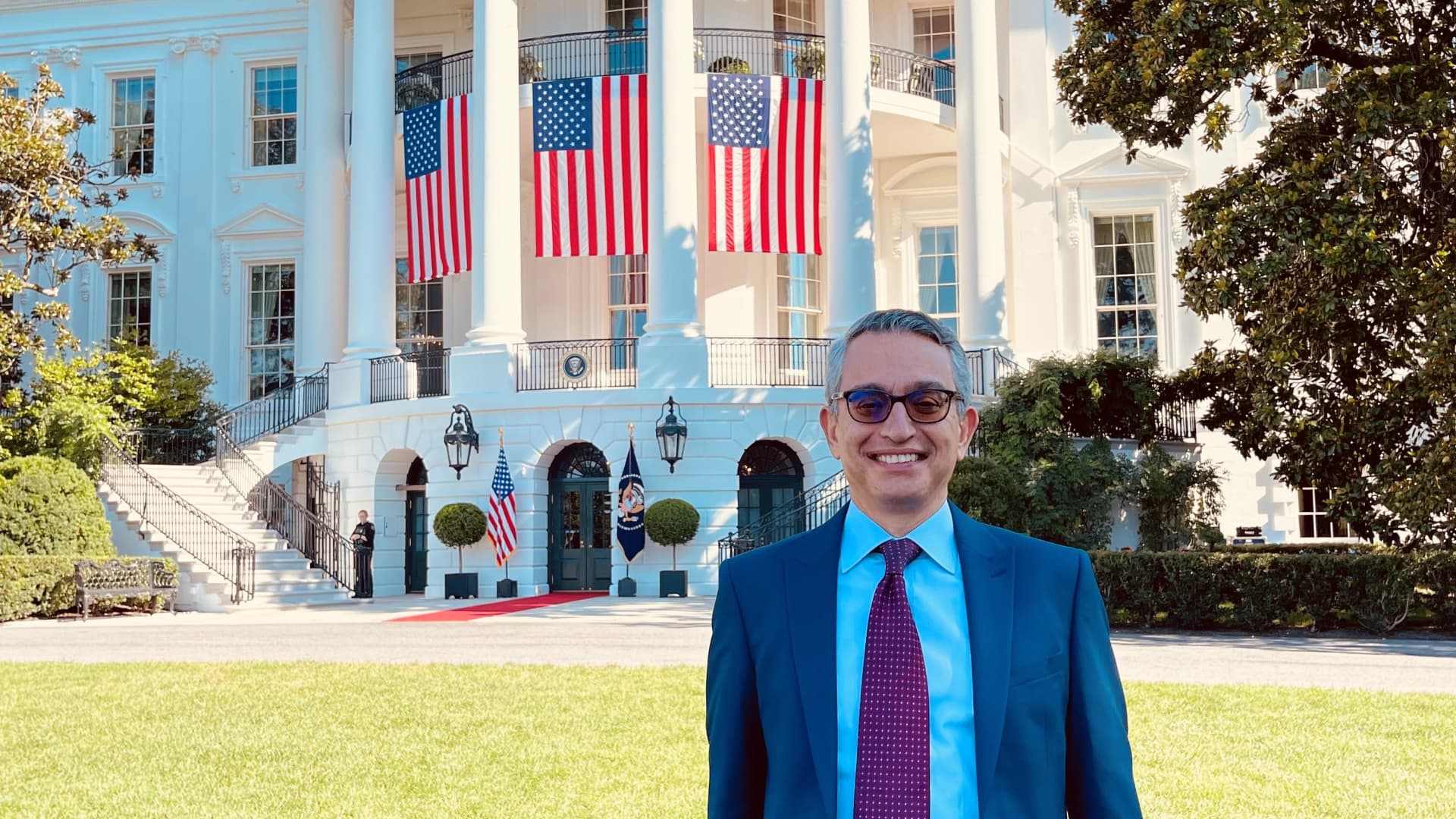Sadek Wahba, founder of I Squared Capital
Photo courtesy Sadek Wahba
The subsequent few a long time are important for humanity to answer climate change. They’re additionally going to see an enormous development towards constructing and urbanization as thousands and thousands of folks transfer to cities.
The confluence of these two large international traits holds numerous climate challenges — and equally expansive alternatives for traders, says Sadek Wahba, the founder and chairman of I Squared Capital, a world infrastructure administration firm that at present manages round $40 billion price of investments in infrastructure initiatives in over 50 nations.
“Investing in infrastructure, climate-related expertise is the longer term,” Wahba informed CNBC in a video interview in May.
Currently, 56% of the worldwide inhabitants dwell in cities, according to the World Bank. That’s about 4.4 billion folks. The inhabitants of city dwellers is predicted to double by 2050, the World Bank says, at which level round 70% of folks will dwell in cities, the World Bank says.
The largest growth in urbanization will occur in India, and extra broadly talking Asia, Wahba says.
“So as folks transfer, it’s important to construct greater and greater cities to accommodate. Those cities are made of concrete. They’re made of metal. They require air-con. They require heating, they require electrical energy. They require a broadband connection. They require cybersecurity. They require the entire gamut of issues. They require transport,” Wahba informed CNBC.
“That requires an unlimited quantity of infrastructure with a significant impression on climate.”
Architectural suppose tank Architecture 2030 initiatives that 2.6 trillion sq. ft of new ground space shall be added to buildings by 2060 — that is the equal of including a whole New York City’s price of buildings to the world each month for 40 years, the most important wave of constructing growth in human historical past.
New York City topped the listing for the world’s wealthiest cities, in line with Henley & Partners.
Alexander Spatari | Moment | Getty Images
As this large growth occurs, all types of new decarbonization challenges will come up.
For instance, the growth of electrical automobile gross sales has been growing yearly for the final decade, according to the IEA. EVs don’t use gasoline, a fossil gasoline product, which is a climate optimistic.
“But they nonetheless must run on roads. The street is made of bitumen,” a by-product of an oil product, Wahba informed CNBC.
“So in case you construct the cities, we could have electrical autos that do not pollute, however the roads themselves coming from oil derivatives, which of course is polluting.”
The batteries for these electrical autos are usually made with lithium, which needs to be mined, transported and processed. Each stage of that course of poses an infrastructure climate downside.
“Transporting it by means of ports, by means of containerships, bulk ships that use diesel: have we considered that? It arrives on the Port of New York or the Port of LA, then it must be processed,” Wahba stated. Then the lithium will then be transported “In vehicles that use diesel. Have we considered that?”
To decarbonize because the tempo of urbanization accelerates would require that options are not solely clear, but in addition cheaper. Developing nations with giant parts of their populations going through meals insecurity and huger are not going to pay for costlier climate-friendly options, Wahba says.
That would require technological innovation.
It is feasible to speed up the tempo of innovation, when there may be the political and cultural will, Wahba believes.
“My aunt is at NIH and she’s a vaccinologist. She was a vaccinologist for 40 years and stated it’s going to take at the least two years on the quickest observe you could possibly suppose. It took 9 months. That is as a result of we have been in a position to put the total assets and the eye of all of our high scientists,” Wahba stated.
The similar sort of collective effort and cash has to go in the direction of combating climate change.
Wahba, who’s a member of President Biden’s National Infrastructure Advisory Council, usually praised the Biden administration for its funding in climate options. He says the administration’s climate efforts have been “truthfully underneath appreciated.” The cash going in the direction of climate mitigation efforts is “basically transformative” for the financial system, Wahba stated.
But, he stated, there may be not sufficient cash from the federal authorities going in the direction of analysis and growth. Investors additionally underestimate the scale of the chance.
Global funding in vitality transition applied sciences reached a report $1.3 trillion in 2022, however annual investments must more than quadruple to more than $5 trillion if the world goals to remain on the pathway of minimizing international warming to 1.5 levels Celsius, in line with a March report from the International Renewable Energy Agency, which is a world intergovernmental company for vitality transformation.
“There are very, very enticing returns,” Wahba informed CNBC. “It’s not simply producing wind and photo voltaic. It’s complete cities that may should be developed and reformulated and thought once more. And that may solely occur with the use of expertise.”
Of course, some climate investments are dangerous. For instance, investing in fusion may make you unfathomably rich or you could possibly lose your each final penny. But there are safer investments that also have sturdy potential for traders.
“The expertise that lets you cost, put electrical energy to your own home and promote it on the grid, that expertise exists,” Wahba says. “That expertise could make 4x.”

